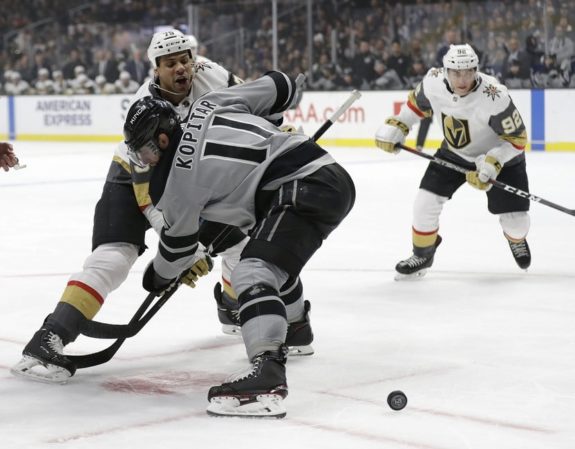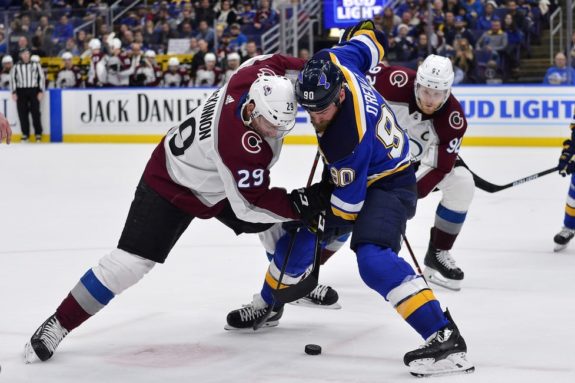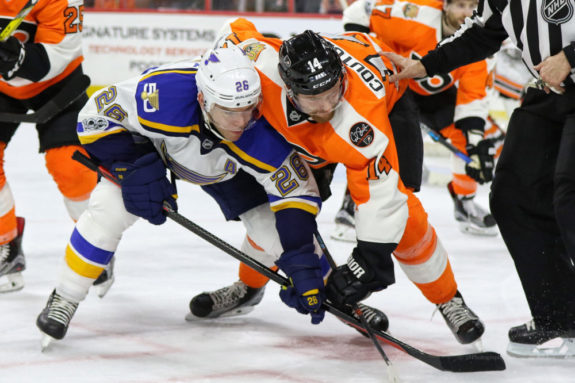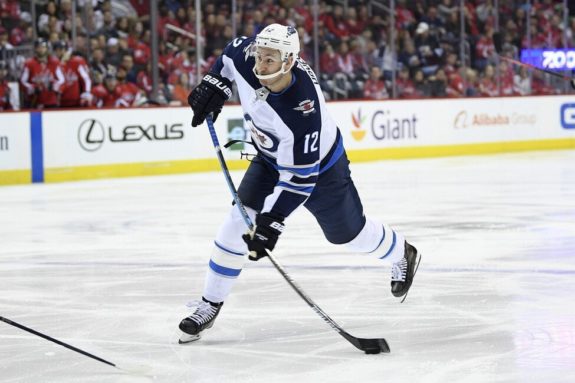Anze Kopitar takes his craft seriously.
Very seriously.
And when it comes to faceoffs, it’s possible the Los Angeles Kings centre is even more meticulous.
Kopitar works tirelessly on his technique, rigorously studies opponents’ tendencies and even scouts how individual linesmen drop the puck.
The smallest detail on a draw can mean the difference between winning and losing in a game where the importance of possession has never held greater value.
So when the NHL announced a faceoff rule change for the 2019-20 season — teams on the attack can now choose which side of the ice play will be restarted in the offensive zone in four specific situations — Kopitar immediately knew the switch would have a huge impact.

“Yeah, of course,” he said at the NHL/NHLPA media tour earlier this month. “Faceoffs are very important to begin with … every team in the league is going to have some set plays based on getting the chance to pick where you’re going to be.
“It’s going to be big.”
Explanation of Rule Change
Starting this season, attacking teams have the option to decide which side of the ice the puck will be dropped after an icing, at the start of a power play, on a shot from outside the red line frozen by the goalie, and when a defensive skater unintentionally dislodges the net.
In previous seasons, the faceoff location was a judgment call made by officials after the play was blown dead.
Centres usually have a stronger side when it comes to winning faceoffs. Most would likely choose to take a draw on the backhand and whip the puck towards the boards, meaning a right-handed player would prefer the faceoff on the right side, and vice versa.
Reactions to Rule Change
St. Louis Blues centre Ryan O’Reilly is 55.3 per cent in the faceoff circle over his career, including a league-high 60 per-cent mark in 2017-18. The reigning Conn Smythe and Selke Trophy winner expects the new rule to be noticeable.

“It’s going to affect who you’re playing,” O’Reilly said. “There might be a guy you try to avoid, but if you can get that draw back and put it (on the tape) of the guys you want to have the puck, it’s definitely an advantage.”
Kopitar said he isn’t sure which side he’s better on — left or right — adding it’s more about feel on that particular night.
“A big part is, ‘Who am I going against?'” he said. “There’s a lot of factors that go into that.”
Kopitar is second only to Pittsburgh Penguins star Sidney Crosby in the number of faceoffs taken since coming into the league in 2006-07. Kopitar has been above 50 per cent since 2011-12 and was a career-high 55.1 per cent last season.
Like everything that can be tracked in the era of analytics, he said teams will try and secure the best matchups and location on any given draw.
“I’m sure the coaches will figure out who to put out on the ice against me or against whoever you want to pick in the league,” he said. “It’ll be interesting to see.”
Faceoffs Lead to Possession
The Philadelphia Flyers led the NHL with a faceoff win percentage of 54.7 in 2018-19, a full 1.7 per cent higher than the second-place Toronto Maple Leafs.
It didn’t help the Flyers get into the playoffs, but keeping the puck is paramount in today’s game — six of the top eight and 12 of the top 16 clubs in faceoff wins made the post-season last spring.

“It’s an advantage to start with the puck and control play (in the offensive zone),” said Flyers centre Sean Couturier, fourth in the NHL at 57.1 per cent last season. “If you’re stuck on your weak side and your power-play centre isn’t as good on that weak side, you lose almost 30 seconds.
“It will definitely have an impact offensively. Is there going to be an immediate impact? I don’t know, but for sure it’s going to bring a few more goals a year.”
Kevin Hayes, who signed with Philadelphia in free agency this summer, said it’ll be a double-edged sword.
“Offensively, it’s the best rule ever,” Hayes said. “Defensively it sucks.”
He added there are instances where he just hopes to tie a faceoff in his own zone and get help from teammates. That could happen even more frequently with this fresh wrinkle.
“Especially if you’re going against a guy on his strong side when I’m not,” he said. “You tell your wingers, ‘Hey, I’m not even trying to win this.'”

Some players at the NHL’s annual media tour conceded they weren’t even aware of the rule change — Boston Bruins goalie Tuukka Rask joked, “They just keep making up these rules.”
But centres and coaches will be studying situations and opponents even closer moving forward.
“It’s an easier game when you win the puck and obviously don’t have to chase it,” Kopitar said. “You want to take faceoffs to your strength and whatever works the best for you.
“You just kind of have to adjust with everything.”
This report by The Canadian Press was first published Sept. 25, 2019.
___
Follow @JClipperton_CP on Twitter
Joshua Clipperton, The Canadian Press